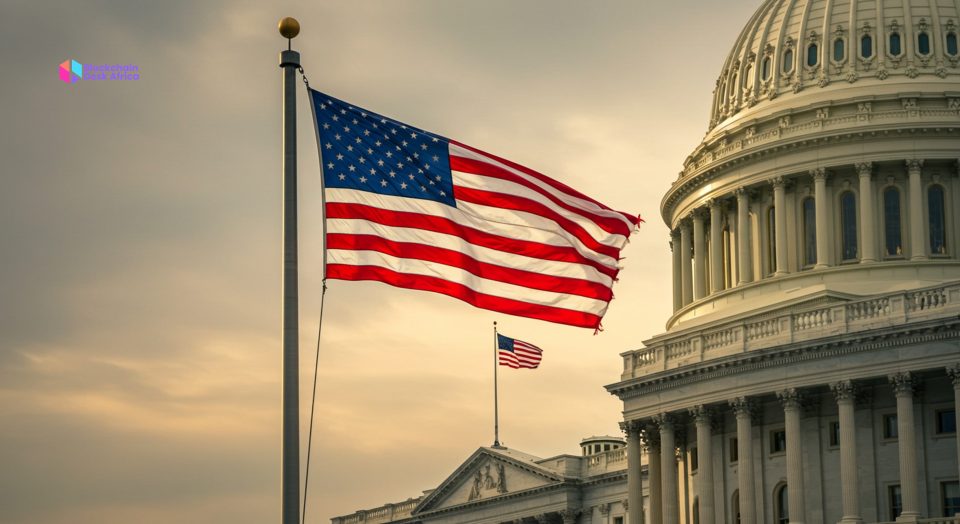The idea of a government-issued digital currency has moved from theory to reality in many parts of the world. Central bank digital currencies (CBDCs), once viewed as experiments for economists and tech experts, are now being tested or launched in dozens of countries. But in the United States, the conversation has taken a sharp turn, less about innovation, and more about privacy, control, and political resistance.
One of the clearest signs of that resistance came in May 2024, when the U.S. House of Representatives passed the CBDC Anti-Surveillance State Act. The bill, introduced by Representative Tom Emmer (R-MN), aims to block the Federal Reserve from launching any kind of digital dollar without Congress signing off. It also prohibits the Fed from issuing a digital currency directly to the public or using it to shape monetary policy.
The supporters of the bill believe it’s a safeguard against government overreach. Critics warn it could stall meaningful innovation in the financial system.
What is a CBDC?
A Central Bank Digital Currency (CBDC) is a digital version of a country’s official currency, issued and regulated by the central bank. Unlike Bitcoin or Ethereum, a CBDC isn’t decentralised. It’s a government-backed, programmable form of money. In practice, it could be used for everyday payments, like rent, groceries, or bills, just like paper cash or digital bank transfers.
But here’s where things get complex.
Because it’s digital, a CBDC could potentially allow the issuing authority to track transactions, control spending, or even restrict usage. That’s the concern. While governments pitch CBDCs as faster, more secure, and more inclusive than traditional banking, many privacy advocates argue they could be turned into surveillance tools.
What is the Anti-CBDC Surveillance Act?
The CBDC Anti-Surveillance State Act is not just about slowing down development. It’s about putting legal guardrails around how a digital dollar could be created, if at all.
The bill:
- Prohibits the Federal Reserve from issuing a retail CBDC (directly to individuals).
- Requires explicit approval from Congress before any digital dollar can be introduced.
- Blocks the Fed from launching pilot programs without oversight.
- Prevents a CBDC from being used to carry out monetary policy (like adjusting interest rates via spending controls).
According to Rep. Tom Emmer, the goal is to ensure that any future digital dollar is “open, permissionless, and private ,just like cash.”
He made his concerns known saying ;without strict boundaries, a digital dollar could “choke out politically unpopular activity” and give the federal government an unprecedented level of control over people’s lives.
Why now? A look at the bigger picture
This legislation isn’t happening in a vacuum. Globally, more than 130 countries are exploring or developing CBDCs (Atlantic Council Tracker). Some are moving fast.
China’s digital yuan has already been rolled out in multiple cities, with features like spending limits and expiration dates.
Nigeria’s eNaira, launched in 2021, was one of Africa’s earliest experiments with a state-backed digital currency, but adoption has been slow, partly due to trust issues and limited infrastructure.
The European Central Bank is deep into research and testing, with plans to decide on a digital euro soon.
The U.S., by contrast, has moved cautiously. The Federal Reserve Bank of Boston, in partnership with MIT’s Digital Currency Initiative, spent two years developing a prototype under Project Hamilton. But nothing has been released to the public.
Political lines drawn
The U.S. digital dollar debate has become highly political. Republican lawmakers generally view CBDCs as a threat to individual freedom and financial privacy. Democrats, while more open to the idea, remain cautious—focusing on privacy protections and consumer impact.
In 2024, Donald Trump made headlines when he publicly opposed CBDCs, calling them “a dangerous path to financial surveillance.” The message was clear: any attempt to launch a government-issued digital currency under a Republican-led administration would likely face strong resistance.
The Anti-CBDC Act, backed by over 50 Republican co-sponsors, is a reflection of this larger ideological divide.
While privacy concerns are valid, critics argue that completely halting progress could leave the U.S. behind in a rapidly digitising global economy.
Technologists and some financial institutions argue for a “privacy-first” CBDC, one that includes end-to-end encryption, clear limits on data collection, and independent oversight.
There’s also a strategic concern: if the U.S. doesn’t take the lead in shaping global digital currency norms, others, like China, will.
Meanwhile, private alternatives like stablecoins (e.g. USDC and USDT) continue to grow, especially in regions like Africa, where they’re already being used for cross-border payments and to hedge against inflation.
What is the risk?
The risk is not just technical, it’s geopolitical.
If other nations develop CBDCs that become widely adopted for international trade or remittances, the U.S. dollar’s dominance in global finance could face real competition.
For emerging markets, many in Africa included, a well-designed U.S. digital dollar could offer faster, cheaper, and more stable remittance channels, as well as increased access to global financial systems.
Blocking its development, some experts argue, could leave space for non-democratic regimes to set the rules of digital finance.
Final thoughts
The Anti-CBDC Surveillance Act isn’t just about digital currencies. It’s about trust in government, the role of technology, and the balance between innovation and individual rights.
What America decides today will shape not just its own financial system but also how countries around the world think about privacy, control, and the future of money.
A digital dollar could either become a beacon of freedom or a tool for control. That’s why the stakes are high, and the decisions made now will echo far beyond Washington.
